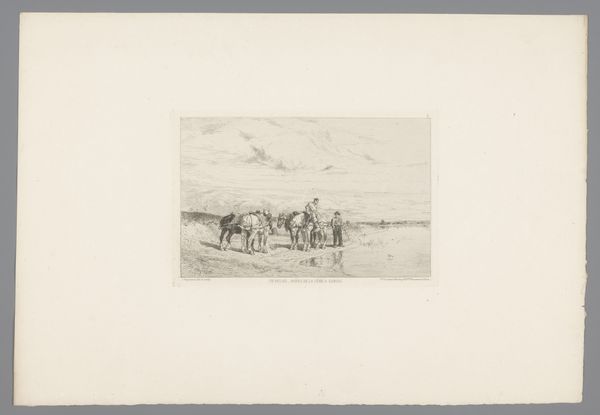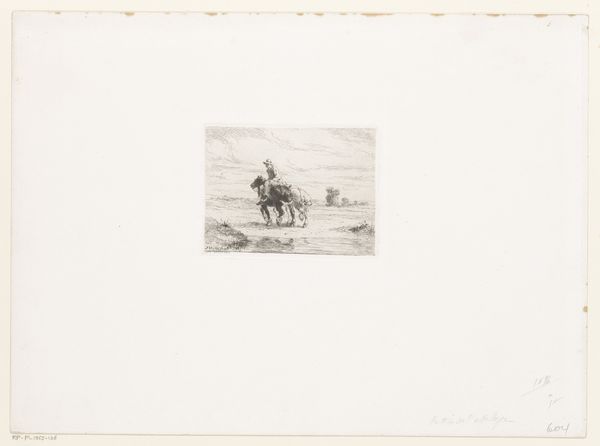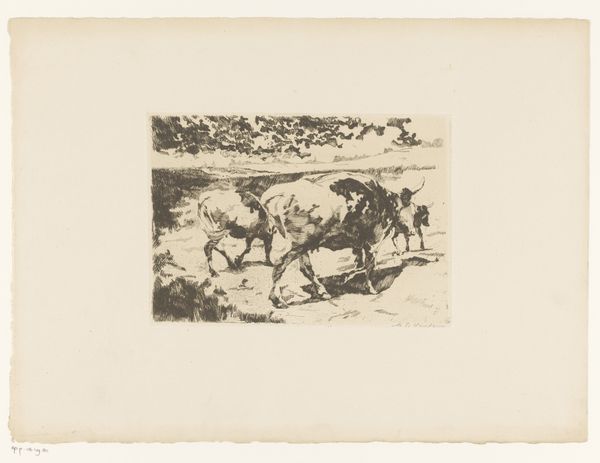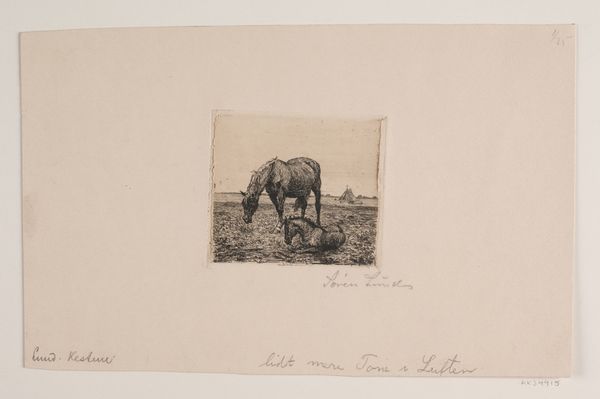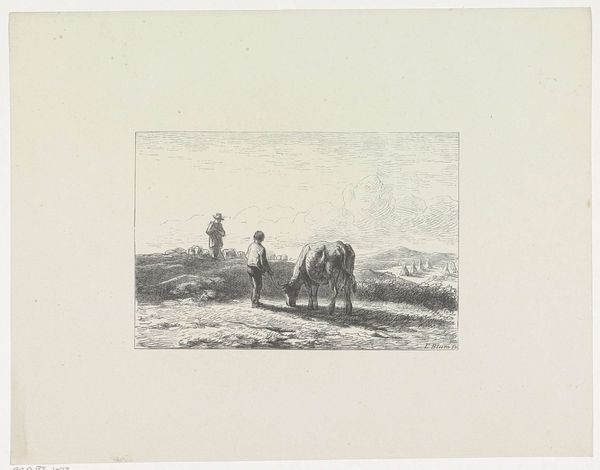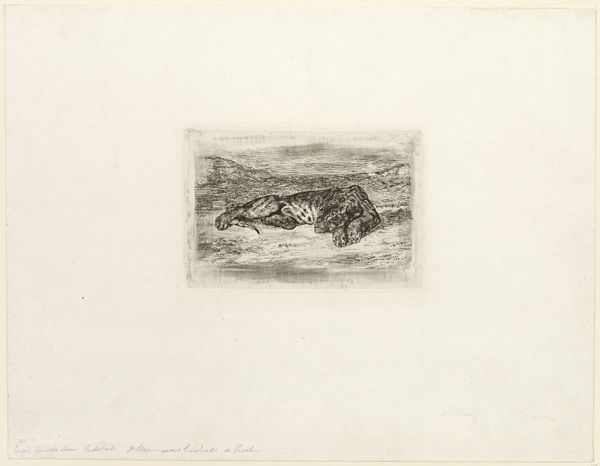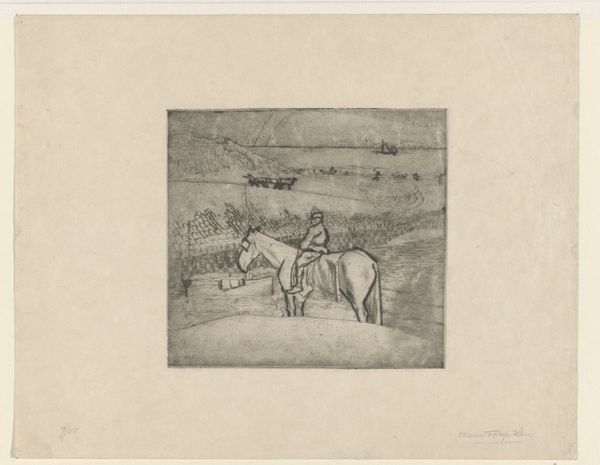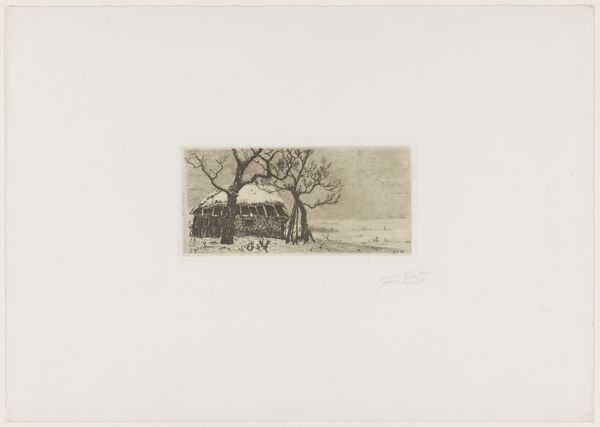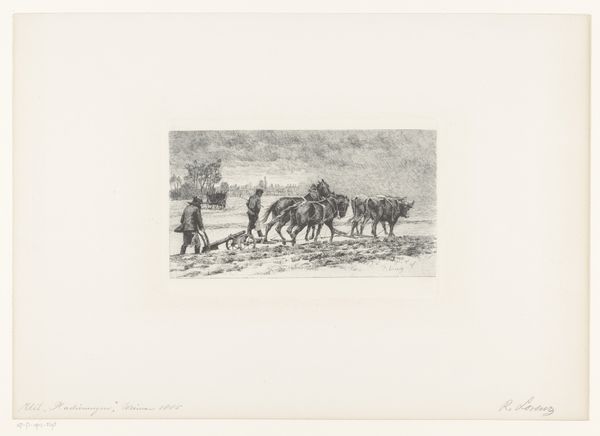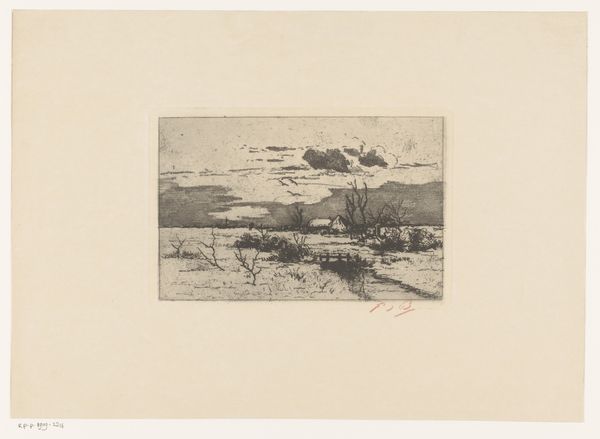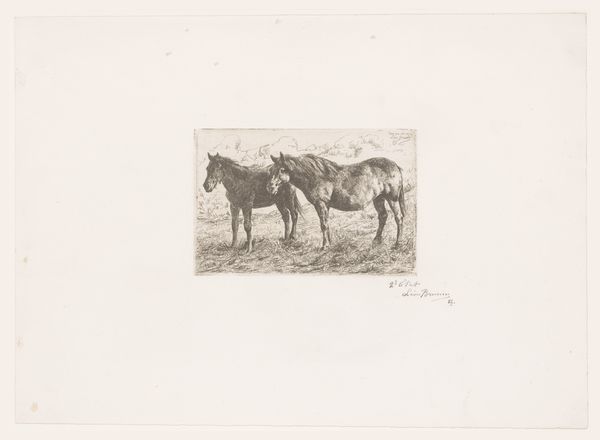
drawing, paper, charcoal
#
drawing
#
landscape
#
german-expressionism
#
paper
#
genre-painting
#
charcoal
#
realism
Dimensions: height 129 mm, width 179 mm
Copyright: Rijks Museum: Open Domain
Editor: Here we have Max Liebermann’s "Landschap met grazende geiten," dating from 1857 to 1935. It's a charcoal drawing on paper, currently held in the Rijksmuseum. I'm immediately struck by its simplicity. The muted tones and broad strokes evoke a sense of stillness. What catches your eye when you examine this piece? Curator: The first aspect that grabs my attention is Liebermann’s masterful use of charcoal. Notice how he employs varying pressure to create a nuanced tonal range. The density of the charcoal strokes defines the forms of the goats, while a lighter touch suggests the expanse of the landscape. Have you considered how this contributes to the work's overall visual structure? Editor: I see what you mean. The darker areas really anchor the goats, making them pop against the lighter background. But is it just about the technique, or could the choice of subject matter contribute something more? Curator: Certainly. Consider the inherent qualities of the chosen subject: grazing goats. What significance might we find in the juxtaposition of this rustic, pastoral subject with the raw materiality of the charcoal? Observe, too, how the composition leads the eye. From the goats in the foreground, our gaze extends to the implied horizon line, encountering what may be figures within the plane. Editor: I didn't notice those faint shapes before! It’s like Liebermann is subtly guiding our view. That makes the scene feel more intentional, less like a simple snapshot. Curator: Precisely. It raises intriguing questions about the relationship between foreground and background, figure and field, presence and absence within the semiotic framework of the landscape genre. The materiality and formal composition actively shape our perception and understanding. Editor: It's fascinating to see how much a simple drawing can reveal through a formal lens. I’ll definitely look at landscapes differently now. Curator: Indeed. By closely examining the intrinsic elements, we gain a deeper appreciation for the artist’s intent and the artwork's potential meanings.
Comments
No comments
Be the first to comment and join the conversation on the ultimate creative platform.
